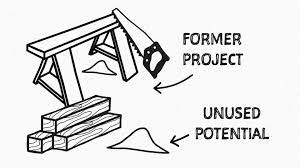Can AI think like your experts?
Real life experience training Discy with Adjacency
Experts spot things that non-experts miss.
Some alchemy of their knowledge, experience and way of thinking. Meaning that what an untrained eye might find vaguely interesting (if they even notice it)... Is gold dust to them.
But experts are in high demand. For good reason.
We want them to reassure and course-correct clients during delivery.
We want them to write, present and share thought leadership that differentiates our brand.
We want them to wow clients during sales.
We want them to inspire the next generation.
So every productive block of their time we free up... has cataclysmic value.
It’s why consultancies wrestle with the best way to structure their practice, and delegate work.
Should Sharon, our disaster recovery SME, be chasing documents, and sifting through a room full of files and interview notes?
Or... should we bring on less experienced support?
But will that mean her time is now spent educating and managing the support? One for every project she's running?
Or... could she have AI support?
Trained with enough of her thinking and expertise to pick up the leg work… Allowing her more time for magic?
This is why the interest is to find an efficient way to train niche AI for consulting. That can be reliably used in delivery, sales and talent development.
Theory in practice?
We’re currently working with Adjacency.
Led by Jon Clark, they help clients get out of their heads and define their value props from the eyes of their customers. Turning the resultant insight into go-to-market approaches that work.
These GTM approaches hinge on matching a customer’s specific problem(s) to the company’s value proposition. That takes knowing the customer’s specific problems.
And that takes research. A lot of reading through annual reports, earnings transcripts, financial statements and the like to spot the hidden gems.
Over the years, Jon has developed the Adjacency framework for how to do this research in a way that draws out the things that work for selling.
The IP is immensely valuable.
The work is essential but time-consuming. Scrolling through all those files is the definition of ‘walls-of-text’!
It is also work that can’t be easily passed off. It still relies on an expert eye to find the right stuff.
Enter Discy. We’ve been working with Jon to train Discy to find the patterns he does. To become his expert eye.
How?
A fairly straightforward process:
Jon shared the framework he uses to research customers. Plus a few choice examples of the phrases that draw his attention in the files he reviews.
We used his framework for the initial training of an Adjacency Discy model
We ran a few annual reports through the model.
Jon jumped into Discy to review and agree/ disagree with the suggestions. This retrained the model to increase the accuracy of its tags and theming.
Jon shared how he wanted the data summarised. We are putting that into action and are now working through some final refinements.
It’s taken a couple of months.
Jon’s effort has been a few days spread over that period. Fitting around his client commitments.
So what?
The Adjacency/ Discy model pulls out c. 80% of the same things an Adjacency expert would do. It’s not the real thing, but it delivers significant value.
Significant enough that it gives a foundation for Adjacency to focus more time on even more impactful services. Drawing on reliable, high-quality data the AI can quickly supply.
What about the sawdust?
Adjacency is now turning this into a commercial product in its own right.
An AI prospect research tool that is trained to analyse in the Adjacency way. Utilising the Adjacency framework.
So if doing more research on your prospects is on your firm’s ‘to-do’ list… we’re happy to put you in touch!
This will turn a point of differentiation into a reusable and resellable asset.
It is what Jack Butcher called; ‘selling your sawdust’.
We call it an example of what will be one of the more powerful use cases for AI in consulting.




